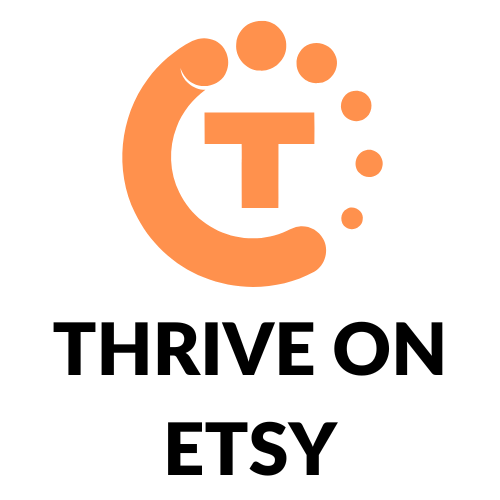There are many aspects you have to consider when advertising on Etsy. You’ll need to think about on-site and off-site advertising methods, as well as how you’ll cope with the fees.
However, doing all of this correctly is a great way to increase traffic to your shop, and to make more sales of your products.
In this article we’ll look at some tips for Etsy advertising, including:
- What Etsy ads are and the categories they fall into
- How to choose which listings to advertise
- How to help your ads perform well
- How to check if your ads are performing well.
Let’s get into it!
What Are Etsy Ads?

Etsy provides multiple ways to advertise your products. These can be split into two general categories.
1. Etsy Onsite Ads
Advertising on Etsy is done through the Etsy Ads program, which you set up on your dashboard. This program is completely voluntary and advertises your products (unsurprisingly) on Etsy.
2. Etsy Offsite Ads
Etsy automatically advertises your products on sites such as Google, Facebook, and so on.
You can opt out if your shop is making less than $10,000 per year, but otherwise the program is compulsory.
Etsy Advertising Tips for Onsite Ads

Because onsite ads are opt-in, you’ll want to make sure that your Etsy ad budget is getting the absolute best performance that it can!
Here are some top tips to help you optimize your on-site advertising.
1. Do Your Research
How much demand is there for your product? How many Etsy users are browsing for similar products each day?
Both of these are factors that will determine some things about how you run your ads.
Etsy Ads has you list a maximum budget to spend on your ads per day. This starts low at $25, but can increase depending on how you use your ad budget.
Understanding how much more traffic there is to drive to your website can help you choose the right daily maximum spend.
Lots of potential buyers? You probably want to be advertising as much as possible.
Not so many? Maybe you can spend a bit less.
Understanding what Etsy users are searching for as regards to your product is also an important step.
What are the current trends in your market at the moment? Are your listings relevant to the things customers want?
2. Make Sure to Run Your Ads with the Right Listings
Choosing which listings to advertise can be tricky. There are a couple of categories you can break your goals and your listings down into in order to see what’s best for you.
- Continuing growth
If you are already making sales and want to continue to grow your shop’s footprint, advertising products that have been selling well and getting good reviews is a great way to do so.
That way, the first thing that people see on your store page are proven offerings that people have already been buying and reviewing positively.
- Beginning growth
If you’re starting up a new shop, or are introducing some new products, advertise those!
Advertising your new products can be a great way to increase their profile and sales.
3. Make Your Listings Ad-Ready
Make sure you’re making use of all of Etsy’s tools to help your listings’ advertising across the board.
Adjust Ads Settings Based on Search Terms
Etsy will try and match the adverts for your listings to potential customers based on keyword matches. If your listing matches a search well, Etsy will show the customer your ad.
So, it’s well worth making sure that you are using relevant keywords and phrases to pull in people who are actually interested in your products.
Using tags is also a great way to ensure that people find your products.
Plus, this will all make your listings more likely to show up in relevant searches even without advertising! It’s a no-brainer.
However, you should be careful that you don’t have keywords or tags that are too common. This means that your ads will be lost in a sea of competing products, and you won’t get as much benefit out of them.
This can drain your ad budget quite quickly (as many commenters detail in this Reddit thread), so make sure that you’re not being too generalized with your listing keywords!
Optimize
Ensure that all your listings are as good as they can get!
Check your grammar and spelling, make sure all your images are the correct size, keep updating your SEO as well as your keyword choices to make sure you’re still in the right market.
4. Monitor Your ROAS
ROAS, or return on ad spending, is a way to make sure that you’re actually getting what you should out of your ads.
To calculate it, work out the total revenue for a period (typically a month), then work out your ad spend. Then divide revenue by ad spend — that’s your ROAS!
The number essentially means how much revenue you get per dollar of ad spending.
Obviously, your ROAS should always be bigger than 1.
You want to be getting more money than you’re spending on ads. Bigger is always better, and different business styles will lend themselves to different minimum ROASes.
5. Monitor Your CTR
CTR, or click-through-rate, tells you how often people are clicking on your ads.
You can work it out by dividing the number of clicks your ads get by the number of impressions they receive.
Again, higher CTR is better, but it can be quite low — several users in this Reddit thread note that it’s normally around the 2% mark.
6. Keep Testing and Adjusting
Marketing in general is not a static process, and it’s the same when it comes to Etsy ads.
If your ads aren’t working, don’t just leave them as they are!
Try to adapt them to better attract an audience. If they’re working well, see if you can find ways to make them work even better.
When adapting your ads and content, it can be helpful to follow this four-step process:
- Perceive
Understand the way people are interacting with you and what you put out.
What do they like? What don’t they?
- Plan
How are you going to use this information? What needs to change, or could be improved?
- Act
Put your plans into practice.
- Adjust
Restart the cycle and adapt to what customers are telling you.
Etsy Advertising Tips for Off-site Ads

Etsy’s off-site ads are adverts that Etsy runs on services such as Google, Facebook, and other common internet platforms.
Etsy takes your listings and sends the information about them to these providers, who in turn serve the ads to their users based on their users’ activity and searches.
As a result, you’ll want to make sure that a few things are up to scratch!
1. Have Good Product Photos
The world of online shopping is all about what people can see.
Without the ability to pick up and try on or play around with a physical item, the first thing that potential customers will be looking at is pictures of your product.
If those pictures aren’t up to scratch — maybe they’re shot in poor lighting, or they don’t emphasize the key points of the product — customers won’t click on the ad, or the listing.
Nobody wants to buy a poorly presented product!
Making sure that you spend time lighting and photographing your products well is the key to success, both with your Etsy listings and off-site ads.
2. Write Good Product Descriptions
This is the next thing your potential customer will look at.
Once you’ve hooked them with a great product photo, you need to seal the deal with a comprehensive and compelling product description.
A good product description includes a few things.
- It’s readable by humans
Although as we’ll see in a moment, Etsy descriptions are quite important for how search engines process your listings (and hence the off-site ads for them), they’re also important because customers may want to read them.
- Details about the product
How big is it? If you’re selling clothes, what are the key measurements?
Is it made of plastic or wood? Is it a print or an original painting?
All of these are things that customers want to know.
- Write an engaging first sentence
Just like the “hook” of a blog post or short story, the first sentence is what gets people reading. It’s also what gets displayed in Google results.
Making sure this is as good as it can be is one of the most important ways that you can improve your product description.
- Include useful keywords
Once again, search engines look for things that match a user’s search. That means they want to check whether your listing contains words that are relevant to the search.
Understanding which keywords your potential customers are likely to use when trying to find your product, and including these in your product listing, means that you’re much more likely to get traffic from off-site advertising.
If you’re struggling with your product descriptions, several users have posted guides on what they think makes a good description on sites like Reddit.
Try one of those on for size!
3. Increase Profit Margin
Sadly, Etsy doesn’t offer you off-site advertising for free.
Whenever a buyer clicks on an ad for your product, then buys your product within 30 days of the ad interaction, you have to pay Etsy a percentage of the sale revenue.
Depending on how much your shop earns, this percentage can change.
Shops that earn under $10,000 pay 15% per sale attributed to an ad, while shops that earn more than $10,000 pay 12%.
It’s important that you make sure you can take the revenue hit as your off-site ads gain traction and traffic!
Raise Price
Raising the price is the most intuitive way to increase profit margins.
If you’ve got a lot of interest in your product(s) at the moment, raising the price slightly might be a safe move, as it means people want your stuff — hence, they are likely to be happy to pay a little more for it.
However, often raising the price can be daunting, as it means you may lose customer interest.
If a lower price than your competitors is one of your main selling points, maybe leave it as is for now.
Decrease Cost
The next most obvious way to increase your profit margin is to decrease the amount you’re spending on making your products.
Buying materials and components in bulk is a great way to reduce the price per product unit, although it comes at the cost of having to store it all.
You can also shop around for cheaper component vendors. Look for local suppliers so you don’t have to pay as much for shipping, and try to improve your creation methods to make them more efficient.
Build Your Customer Lifetime Spending
This is a slightly less obvious way to improve your profit margins, but one that is just as important.
If a customer buys one product from you, great. But if a customer buys multiple products from you, over a long period of time? Even better!
Customers doing this means that two things happen:
- You build goodwill with that customer
- You make more sales.
With goodwill, especially, those customers are more likely to recommend your products, leading to further sales!
The nice thing about sales after a customer buys from an ad is that they aren’t affected by the off-site advertising percentage Etsy takes. So, this way you’ll be back to your typical profits on an item.
Building your customer lifetime spending can be tricky. However, there are ways to encourage customers to keep spending with you:
- Try adding customers to a mailing list
- Send special offers for your store items to previous customers
- Create a customer community to build engagement and retention.
The Bottom Line
Advertising on Etsy can seem daunting at first, but with the help of this guide (and a little bit of elbow grease) you’ll be well on your way to advertising success.
Don’t forget to make sure that you are getting a good ROAS, have a comfortable profit margin, and of course have attractive listings so that people click on your ads and buy from your shop!
Good luck!

